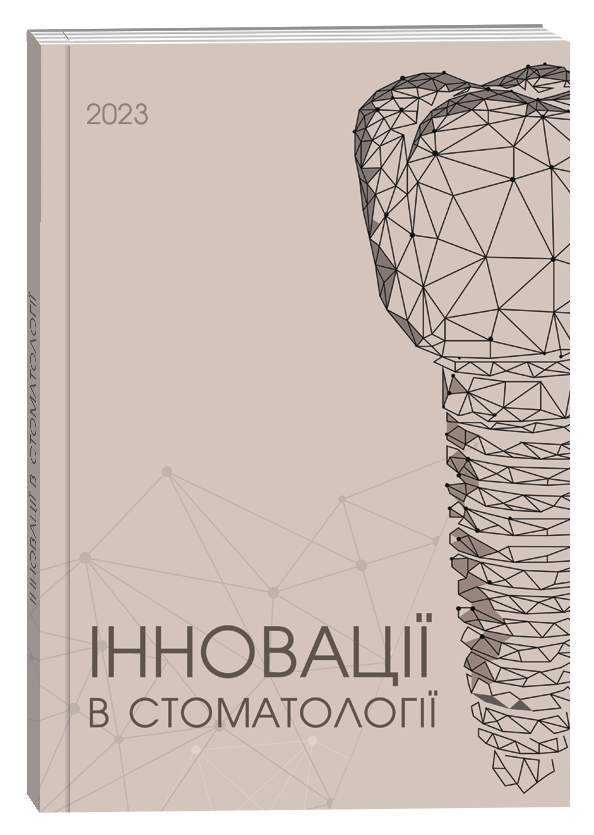ANALYSIS OF THE THERAPEUTIC EFFICACY OF THE USE OF NANOTECHNOLOGICAL GEL FOR THE CORRECTION OF ORAL DYSBIOSIS IN CHRONIC CATARRHAL GINGIVITIS IN CHILDREN
DOI:
https://doi.org/10.35220/2523-420X/2025.1.23Keywords:
chronic catarrhal gingivitis, oral fluid, children, lysozyme, urease, degree of dysbiosisAbstract
The aim of this study was to analyse and evaluate the clinical efficacy of the nanotechnology gel in correcting dysbiotic changes in the oral cavity of children with chronic catarrhal gingivitis. Methods of the study. The study involved 235 people aged between 3 and 17 years, of whom 175 were diagnosed with inflammatory diseases of the periodontium (chronic catarrhal gingivitis) and 60 with intact periodontium. In order to evaluate the effectiveness of treatment and prevention of exacerbations of chronic catarrhal gingivitis, the degree of dysbiosis in the patients’ oral fluid was determined in the dynamics of the study (before treatment, after 1 month, after 6 months). Patients in the main group were prescribed Neovitin gel for 1 month – gum applications and recommended to use VIVAX Dent toothpaste with active peptide complex and Betulavit for 4 weeks, then VIVAX Dent toothpaste with active peptide complex and Bisabolol for 4 weeks. Patients in the control group were treated with a 3 % hydrogen peroxide solution; Rotokan was used for mouthwash (during the first week of treatment); the therapeutic and prophylactic toothpaste was recommended by the parents. The degree of dysbiosis in the oral fluid was determined by calculating the dysbiosis index, which is based on the ratio of urease activity to lysozyme concentration. Lysozyme concentration was determined by the nephelometric method and urease activity by spectrophotometric analysis. Scientific novelty.As a result of the study, it was found that when comparing all indicators of the main and comparison groups with each other 1 month and 6 months after treatment, the difference was significant (p < 0.05), except for urease activity (1 month after treatment). The results obtained showed a high and long-term efficacy of our proposed therapy for chronic catarrhal gingivitis using a nanotechnological gel with the property of peptide regulation. That is, the immunotropic regulatory effect was confirmed by a significant reduction in the degree of oral dysbiosis.All this indicates that the long-term effect of the therapy is linked to the effect on the pathogenesis of gingival inflammation, in particular the regulatory effect of peptide complexes with the development of a specific immune response. Conclusions. Thus, on the basis of the study, it was found that the use of nanotechnological gel in the complex treatment of chronic catarrhal gingivitis in patients of the main group contributes to the normalisation of the oral microbiocenosis by reducing the degree of dysbiosis. The obtained results confirm the high clinical efficacy and prolonged effect of the proposed therapeutic strategy, which substantiates the feasibility of its use in dental practice.
References
Чухрай Н. Л., Мусій-Семенців Х. Г., Дутко Г. З., Стадник У. О., Лисак Т. Ю. Клінічна оцінка ефективності лікування хронічного катарального гінгівіту в дітей з олігофренією. Клінічна стоматологія. 2022. № 1. С. 38–45.
Godovanets О., Kitsak Т. Analysis of the risk factors promoting development of chronic catarrhal gingivitis in children suffering from simple diffuse goiter. Stomatological Bulletin. 2022. Vol. 119, № 2. Р. 78–82.
Авдєєв О. В. Визначення особливостей перебігу гінгівіту в дітей як основа при плануванні лікувально-профілактичних заходів. Клінічна стоматологія. 2015. № 2. С. 104–108.
Змарко Ю. К. Клінічнопатогенетичне обґрунтування використання нанотехнологічного гелю у комплексному лікуванні дітей із хронічним катаральним гінгівітом : дис. … канд. мед. наук : 14.01.22 / Львівський національний медичний університет ім. Данила Галицького. Львів, 2018. 175 с.
Боднарук Ю. Б. Динаміка змін окремих фізико-хімічних показників ротової рідини у дітей з хронічним катаральним гінгівітом на фоні дитячого церебрального паралічу. Вісник проблем біології і медицини. 2019. Т. 2. Вип. 1(149). С. 334–337.
Каськова Л. Ф., Новіков Є. М. Динаміка показників активності лізоциму та уреази ротової рідини в дітей із хронічним катаральним гінгівітом у період змінного прикусу. Український стоматологічний альманах. 2013. № 1. С. 84–87.
Гевкалюк Н. О. Стан основних імунобіологічних показників ротової рідини у дітей, хворих на грип та інші гострі респіраторні вірусні інфекції з проявами захворювання в порожнині рота. Клінічна стоматологія. 2015. № 2. С. 109–112.
Авдєєв О. В., Змарко Ю. К. Зміни показників ротової рідини дітей дошкільного віку з гінгівітом під впливом лікувально-профілактичних заходів. Клінічна Стоматологія. 2018. № 2. С. 64–69.
Bandrivsky Yu. L., Bandrivska O. O., Malko N. V., Posolenyk L. Ja., Vydoinyk O. Ja., Iskiv M. O. The effectiveness of the use of polypeptide drugs and their effect on the metabolic parameters of oral fluid in patients with generalized periodontitis depending on blood type. Pharmacia. 2022. № 2. С. 429–435.
Левицький А. П., Макаренко О. А., Селіван- ська ІО. Ферментативний метод визначення дисбіозу порожнини рота для скринінгу про- та пребіотиків: методичні рекомендації. К. : ГФЦ. 2007. 22.
Pachevskaya A. V., Beloshitskaya A. V. Markers of dental childrenʼs health in the application of therapeutic orthodontic equipment. Wiad Lek. 2017. 2017. № 70(3 pt 1). Р. 489–492.
MorouBermudez E., Rodriguez S., Bello A. S., DominguezBello M. G. Urease and Dental Plaque Microbial Profiles in Children. PLoS One. 2015. Vol. 10. № 9. e0139315.








